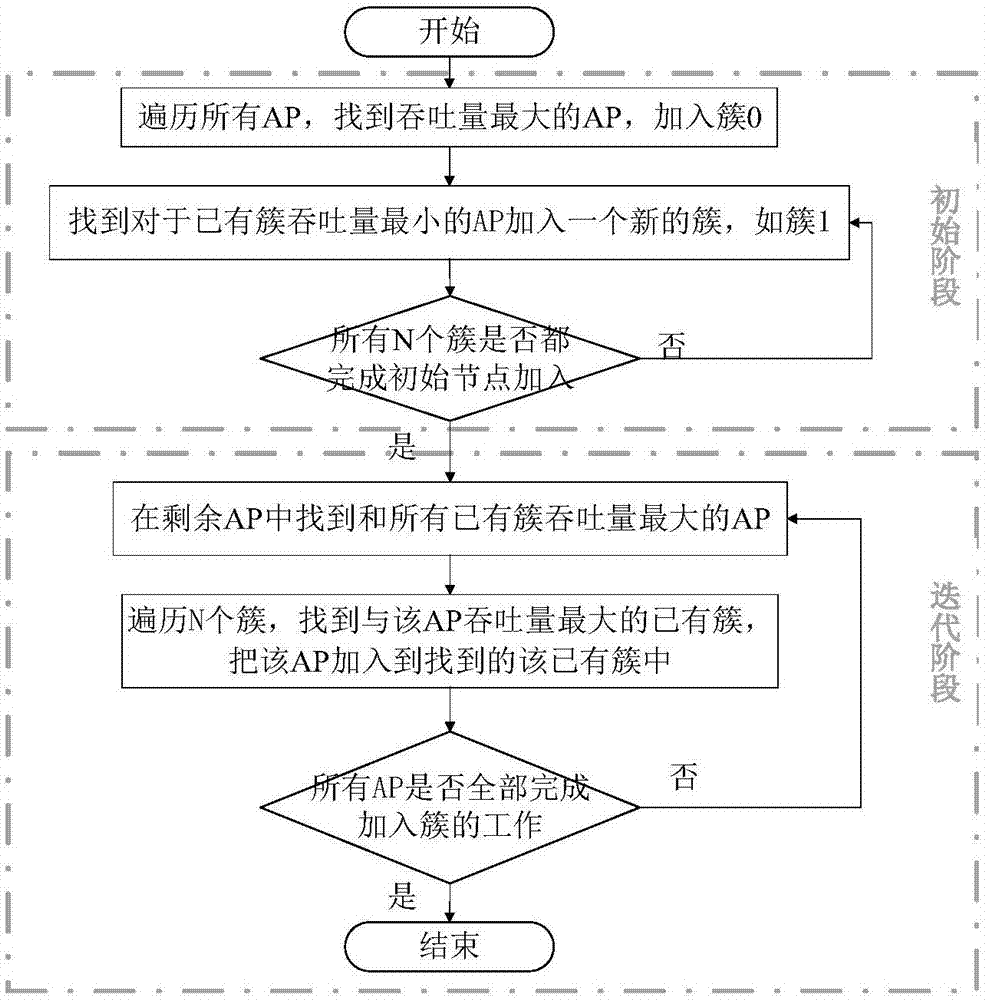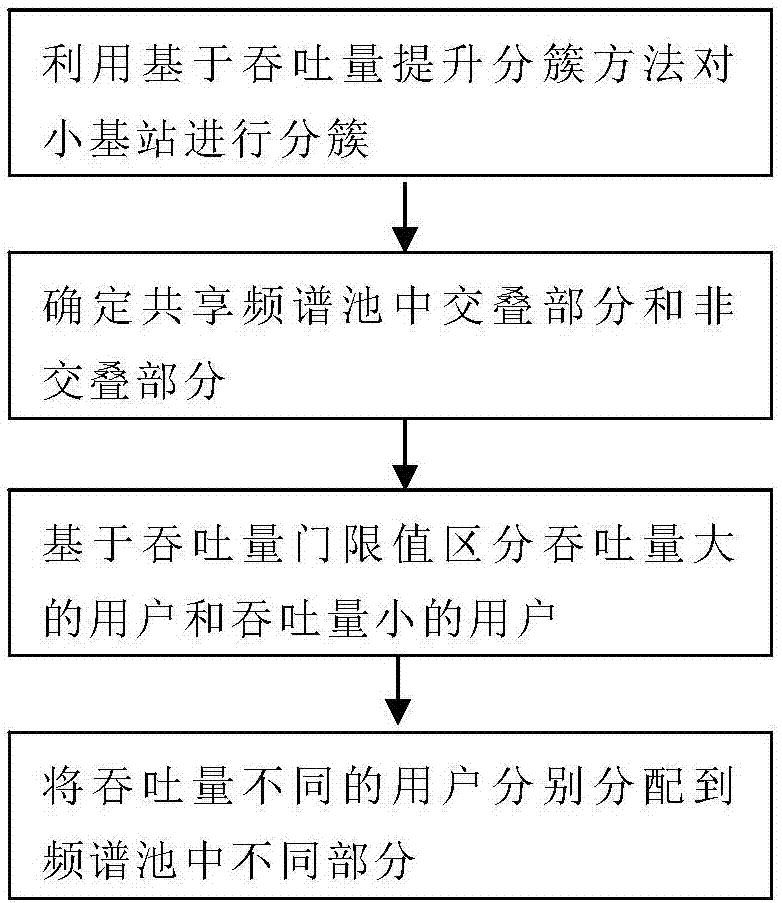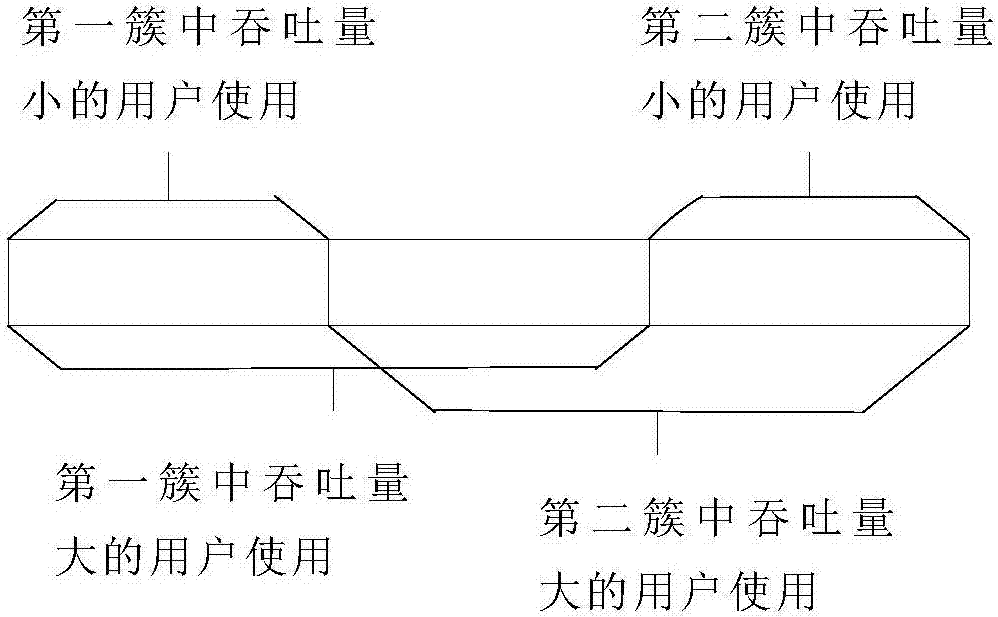Cell clustering method and frequency spectrum overlapping multiplexing method based on same
一种小区分簇、小区的技术,应用在电气元件、无线通信、网络规划等方向,能够解决无法保证网络容量和网络覆盖水平、粒度大、不能消除和减少簇内小基站强干扰等问题,达到提升小区边缘频谱效率、提升平均频谱效率的效果
- Summary
- Abstract
- Description
- Claims
- Application Information
AI Technical Summary
Problems solved by technology
Method used
Image
Examples
no. 1 example
[0052] Combine below figure 1 , the first embodiment will be described in detail.
[0053] Step 1: Clustering small base stations
[0054] In this step, all small base stations in a virtual cell are divided into different clusters.
[0055]First, the number of clusters for clustering the small cells is obtained. In this embodiment, according to the CCIR method or the CCTI method proposed by the present invention (described in detail later), the optimal number of clusters in the CCIR method or the CCTI method is determined through simulation.
[0056] The optimal number of clusters in the present invention refers to the optimal number of clusters when the system capacity and coverage performance are divided into other cluster numbers. In other words, when the small base stations are divided into the optimal number of clusters, the overall performance of system capacity and coverage performance is the best. The optimal number of clusters is obtained as follows: first assume ...
no. 2 example
[0092]After using the CCTI method provided by the present invention to perform cell clustering based on throughput (SINR) and fairness, based on the clustering results, LTE fairness scheduling, soft handover, etc., and spectrum multiplexing can also be performed. kind of scheme.
[0093] For example, in the method of performing user scheduling after performing cell clustering based on throughput, each small cell may separately schedule users in the cell according to the principle of proportional fairness after performing cell clustering based on throughput. Scheduling can also be done by means of polling and maximum load-to-interference ratio.
[0094] In the second embodiment, combining figure 2 and image 3 This paper introduces the spectrum overlapping multiplexing method after cell clustering based on throughput. Include the following steps:
[0095] Determining overlapping and non-overlapping parts of the frequency spectrum that cells of each cluster can use;
[009...
no. 3 example
[0109] The difference between the third embodiment and the first embodiment is that the optimal number of clusters is obtained according to the existing CCIR method, and different users are distinguished based on the signal-to-interference-noise ratio (SINR), and then allocated to overlap or non-overlapping parts. The method includes the following steps:
[0110] Determining overlapping and non-overlapping parts of the frequency spectrum that cells of each cluster can use;
[0111] Judging users with high interference and users with low interference in the cell, and assigning the users with high interference to the non-overlapping part.
[0112] Wherein, the users with high interference refer to users with poor SINR in the cell; the users with low interference refer to users with high SINR in the cell.
[0113] refer to Figure 4 , first obtain the optimal number of clusters according to the existing CCIR method, and the optimal number of clusters is 2 in this embodiment. ...
PUM
 Login to View More
Login to View More Abstract
Description
Claims
Application Information
 Login to View More
Login to View More - R&D
- Intellectual Property
- Life Sciences
- Materials
- Tech Scout
- Unparalleled Data Quality
- Higher Quality Content
- 60% Fewer Hallucinations
Browse by: Latest US Patents, China's latest patents, Technical Efficacy Thesaurus, Application Domain, Technology Topic, Popular Technical Reports.
© 2025 PatSnap. All rights reserved.Legal|Privacy policy|Modern Slavery Act Transparency Statement|Sitemap|About US| Contact US: help@patsnap.com



